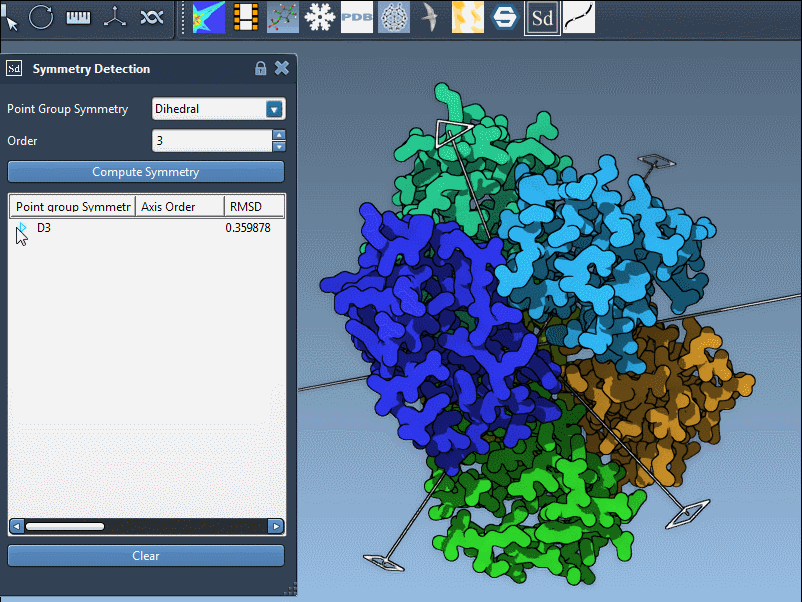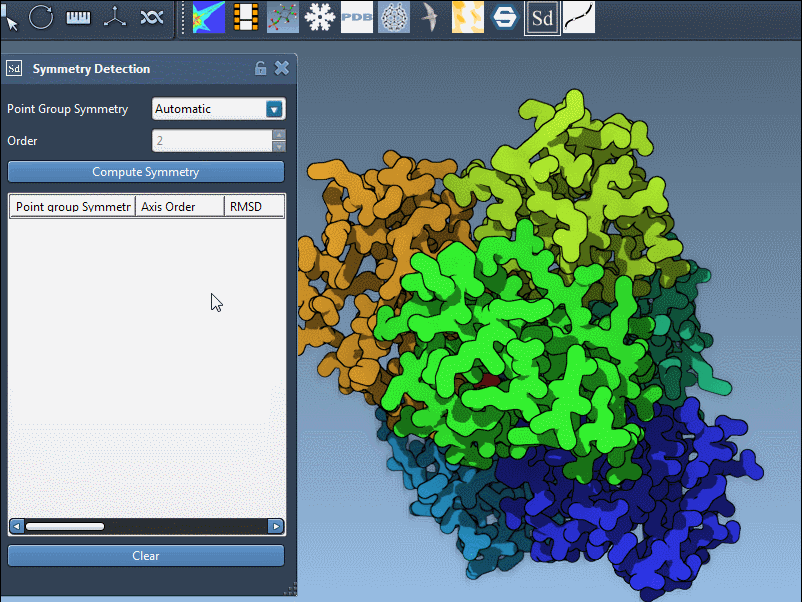When working with large biomolecular assemblies like viral capsids or symmetrical protein complexes, finding the right perspective can make or break your design or simulation workflow. One overlooked but powerful technique is aligning your view along symmetry axes. The Symmetry Detection extension in SAMSON makes it easy to do this, helping molecular modelers analyze repeating functional units, identify symmetry-specific targets, and reduce simulation costs.
Why Align with Symmetry Axes?
In symmetric assemblies, viewing your system from the direction of a symmetry axis can quickly highlight repeating structural elements such as interaction patches or binding sites. This can be helpful when:
- Comparing equivalent interfaces and subunit placements
- Designing symmetric mutations or ligands
- Generating publication-ready figures with spatial context
How to Do It in SAMSON
Once you have run the Symmetry Detection extension and detected symmetry groups in your structure, explore their axes using just a click:
- Single-click an axis to highlight it in bold in the viewport
- Double-click an axis to align the camera along it
This action reorients your view so that you’re looking straight down the selected symmetry axis, immediately exposing the radial layout and interactions in your structure.

Use Case: 1B4B Complex
In the 1B4B system, which has dihedral symmetry of order 3 (D3), you can switch between symmetry axes to compare different subunit arrangements. This is especially helpful in preparatory stages before heavy computation, or when selecting the orientation for documentation or publication.

Choosing the Right Axis
Many structures yield multiple plausible symmetry axes. The extension lists them with their RMSD (Root Mean Square Deviation) scores, which indicate how tightly the structure adheres to the commanded symmetry. When deciding which axis to explore:
- Prefer higher-order groups with lower RMSD values
- Try double-clicking several axes to inspect different views
Make it Visual
Combine the aligned view with other visual models like ribbon representations or chain-based coloring to clarify the subunit repetition and functional motifs. Viewport snapshots taken along a symmetry axis are ideal for use in presentations or publications.
Conclusion
If you work with symmetric biomolecular structures, aligning your camera along a symmetry axis is a quick, insightful way to understand structural logic and interface design. It’s a small feature in the Symmetry Detection extension—but one that can save time and effort in visual analysis and communication.
To learn more, visit the full documentation: Symmetry Detection in Biological Assemblies.
SAMSON and all SAMSON Extensions are free for non-commercial use. You can get SAMSON at https://www.samson-connect.net.





